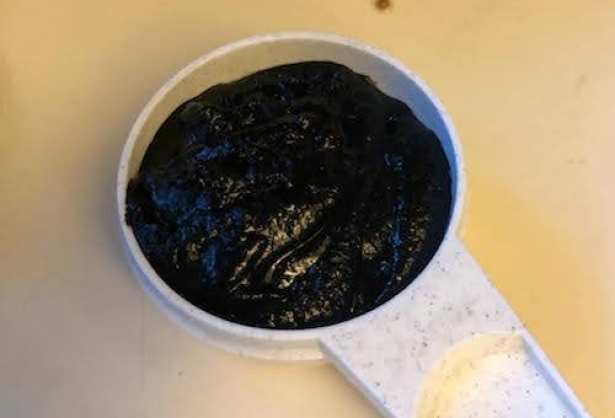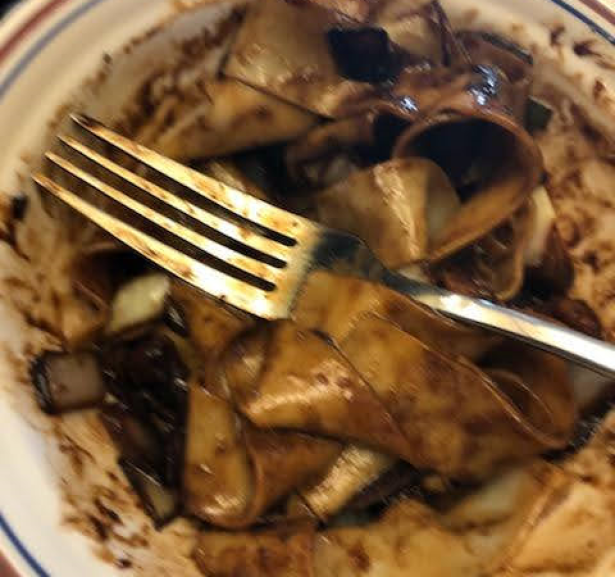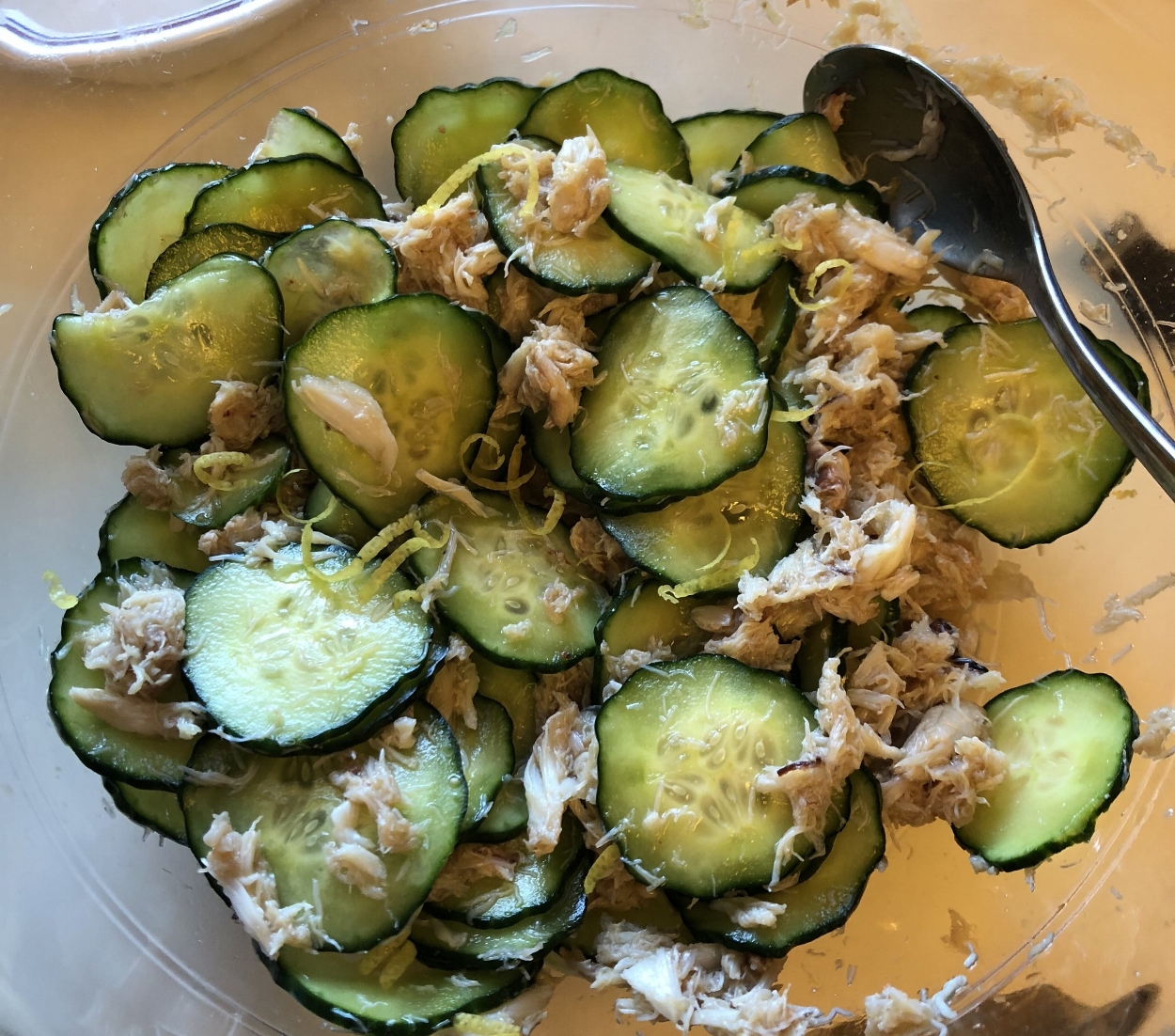KC 286 - Jajangmyeon (Korean Black Bean Noodles)

Good afternoon ladies and gentlemen! At least I hope it's afternoon when my esteemed eldest brother decides to post it at the normal time. I'm your true favorite host Reverend Doctor Nathan O'Guin. I've given myself so many titles on the site I figured why not go big with the Reverend Doctor. Speaking of nonsense titles, as the self-proclaimed Admiral of Asian cuisine for the site, I 'm back with a Korean street food dish, jjajangmyeon (Korean black bean paste noodles). I know there have been a number of Asian dishes not made by me on the site, but just skip over those in your mind.(And if you want to skip over the rest of the post and just get to the recipe, click here. For everyone else, let’s dig in to what Nate’s served up.)
CHANGING THE PLAN
I first saw the recipe for jjajangmyeon in a Korean cookbook my mother bought by Maangchi. As I was never an English class fan, I leave it to the (more than likely) italicized Jon commentary to decide if he wants to cite the book or not. (At the very least, I should probably let the people know that Maangchi (Korean for “hammer”) is the channel name and online handle of a Korean food YouTuber with nearly, who focuses on making Korean recipes. She’s the biggest name in ‘authentic’ Korean cooking in the west, having been dubbed by some a “Korean Julia Child”)
That is a classic Julia Child pose, so I buy it.
The picture looked so good I told our family we have to make this. (I would like to note that I have been arguing that we should make either jajangmyeon, or the Chinese dish it’s based off of, zhajiangmian, since before COVID hit. I spend 18 months pitching a dish to no avail and Nate sees ONE picture, and decides “full steam ahead”. ) So we set off to find some of the ingredients. Most are pretty commonplace, or easy to find, but there is one ingredient in jjajangmyeon that is not substitutable and was tricky to find, until my mom and I both remembered that online shopping exists and found it in about 23.4 seconds. It's called Chunjang, and it is the specific Korean black bean paste used in jjajangmyeon, and I would assume other dishes, but I was laser focused on these noodles and have done no further research into it. (Yes, but also no. Chunjang (believed to be a Korean approximation of Chinese Tianjiang, “sweet sauce”) once cooked, becomes jajang (“fried sauce”), hence the name “jajang myeon”, which literally means “fried sauce noodles”. You can actually put jajang on different things, like rice, or tteok-bokki. You SOMETIMES see uncooked chunjang as a coating for raw onions to eat with barbecue, or as a side-dish for meals.)
Can’t miss it, looks like tar.
Now while waiting for the chunjang to arrive, I stumbled across a YouTube channel called Aaron and Claire, where a Korean man, Aaron, living in Seoul gives really quick cooking instructions on making Korean foods and he brings in a taste taster, Claire. (Weird to describe her as “a taste-tester” over “his wife”, but you’re the admiral, I guess.) I liked his personality and, lo and behold, he had a video on jjajangmyeon. And since he made two different versions, one of which only takes 7 minutes (supposedly), I made a last second decision on the day I made the dish to almost completely forego the recipe by Maangchi and use his instructions. Okay, that's not entirely true. But I'll get to that a little bit later.
DECISION PARALYSIS
Ehh it's close. Now reader, I haven't been entirely honest with you. There was one ingredient that I could not find and did not want to order online, as I thought them too fragile to ship. To make actual, legitimate jjajangmyeon, you need somyeon, Korean wheat noodles. (You may recognize the name as being similar to “Somen”, JAPANESE Wheat Noodles. And. you would be wise to do so, because they’re the same thing.) Granted according to Aaron, who is very big on using what you have, you really don't need them, which is good. As we did not have them. However we did have freshly made pappardelle. We also had a couple packs of instant jjajangmyeon noodles. So we had a discussion on whether to use the fresh pasta, or open a packet of the instant noodles, throw out the seasoning and sauces that go with them and use those noodles. The fresh pasta won out, largely due to the fact the fresh pasta was approaching the time of it's throwing away.
You must be consumed, lest ye be destroyed.
Also mom came up with the great idea of making a packet of the instant version and doing a compare and contrast. Which we thought was a great idea. Oh sweet summer children. It was not a great idea. More like middling.
A SEOUL-FUL AFFAIR
So, for the first time in forever....hold on...I just received a cease and desist and can no longer use that phrase. Man, the House of Mouse is fast. Anyway, I decided maybe for one recipe I should chop and dice all my veggies prior to starting the cooking process. A useful choice, but also, a meaningless distinction. This recipe only calls for chopped pork belly, onions, and green onions.
Chop chop! Chop! Then several more chops.
Outside of that, the prep work is basically done. Oh and start some water boiling for the noodles. Start by heating oil in a pan. Once it's hot, then throw in the pork belly. If you cut it a bit thinner, it'll cook up a bit faster. As I was not pressed for time, I made it a bit bigger, for meaty chunks in the finished product. Once that is cooked and crisped a bit, you add the chunjang and fry it all together for a bit. Now this is where I did follow back up with the Maangchi version. I looked at her recipe to figure out roughly how much to use given the amount of food I was making, since Aaron and Claire seem to make portions more in line with one, or two light eaters. But I was making dinner for two avid eaters and my mother. Once you mix the chunjang a bit, you add in some oyster sauce, and sugar. Then throw in the green onion and onion. Now you don't want to fry this off too much as the onion will lose some of it's crunchiness and you want that a bit. Or if you prefer your onion with less toothiness, then go ahead and cook it down a bit more. Really up to you. After that, you want to go to make a slurry of potato starch (I was going to use corn starch) and water to thicken up the sauce. Now the sauce was already plenty thick so I decided to skip the slurry. And voila, your topping is done.
Can’t miss it, looks like tar and raw onions.
Now at this point you want to put it on top of some noodles and mix together and eat. However, if you are me, you'll have noticed the water was starting to boil too early, so you turn it down. Then you realize that your noodles won't be ready because the water isn't boiling at the time the sauce is done. So you set the sauce on the back burner to stay warm on the stove and boil the noodles. Once they are done, run them under cold water to remove the starch on the outside and cool the noodles down. Then you plate the noodles, cover in sauce mix and enjoy. And for only a couple ingredients in the sauce, this dish is pretty dang tasty.
And blurry!
COMPARE AND CONTRAST
Now while I was boiling water and making the fresh pasta. My mother took to making the instant version of this dish. Sorry I can't guide you to purchasing the version we have as I can't type hangul on this word processor I'm using. Or I might be able to, but really just amazon search “instant jjajangmyeon” or go to a Korean market if you have one close by. We have one about a 35 minute drive away, which is why we opted to order it online. Now either the instant version is nothing like what the actual taste of what the dish should be…or my version is nothing like it should be, but regardless, it was a universal that the homemade version was the preferred one. The instant version to me tasted like powdered bean paste. Not that it was powdery, but it had that processed flavor that comes with powdered things. So if you are thinking of trying this dish at home, just get the ingredients and make it yourself. It really isn't that difficult and it is very good. That's all I have for you today, sooooo, bye. Oh I guess the “recipe” I used is below. The quotes are because for the oyster sauce and sugar, I kinda just did measure by eye. So I don't have a set amount for you. Check out Aaron and Claire's YouTube for a smaller portion size if you want.
THURSDAY: YOUTUBE? KOREAN FOOD? MY FAMILY’S WEIRD NEW TOY?
MONDAY: MORE KOREAN STUFF? DRINKS? I DON’T KNOW.
this is the
Recipe
O’Guin Thick Noodle Jjajangmyeon
3 T vegetable oil
8 oz pork belly, roughly ¾ inch cubed
1/3 cup chunjang
1 large onion, roughly chopped
3 green onions, cut into about 1” pieces
2 T oyster sauce
1 ½ T sugar
1 packet of pappardelle (I forgot to look at the label for weight, but I'd guess about 10 ounces, basically just get enough noodles that when cooked will feed four people) (Or, you know, Somen/Somyeon. But we did thick noodles)
(You’re supposed to include the steps again, NATE. Ugh.)
Preparation
Place a pot of water over high heat to bring to a boil. Heat the oil in a large skillet over medium heat. Add the pork belly, and cook until browned and to your desired crispness. Add chunjang, and fry 1 minute, until fragrant. Add oyster sauce, onions and green onions, and fry to desired crispness of onion.
Boil pasta in water until done. Rinse, top with sauce, and serve.











